What To Do With Old Worn Out Clothes You Can't Donate
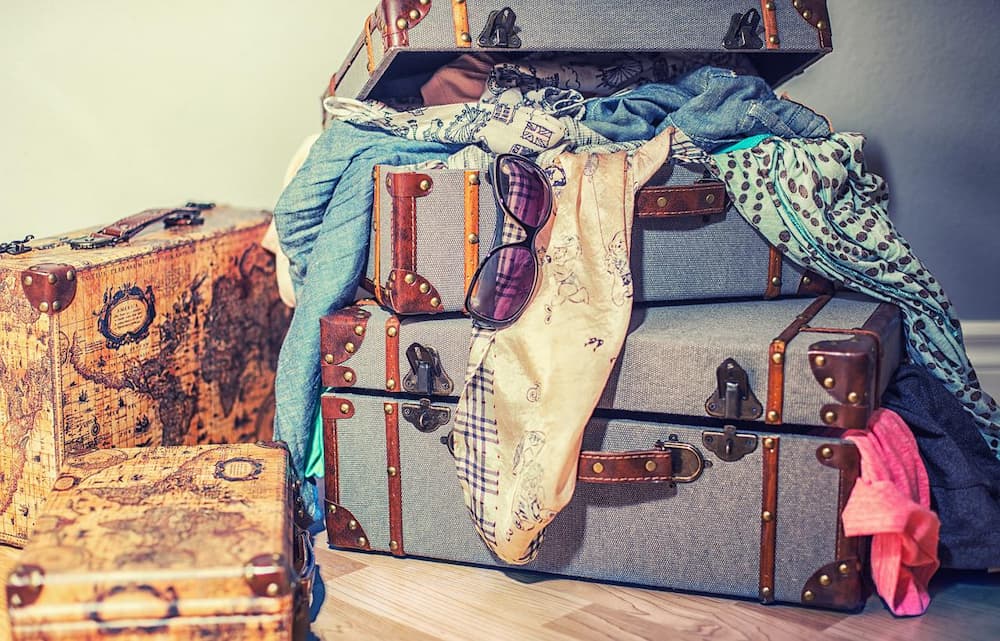
Most of us have old clothing that we no longer wear. Do you ever wonder what to do with old worn-out clothes you can't donate? Too often quickly throw them into the trash instead of giving clothes a second life. Although the EPA estimates that 95% of textiles may be recycled, only 15% of used clothing is recycled. Can clothes be recycled? If so, why is 85% of clothing not being recycled?
We've been talking a lot about how we want to make greener, thriftier and eco-conscious decisions in our personal lives, but do we make the effort to make those changes in our daily lives? While we may consider ourselves to have a "go green" mentality, it's only words until we live it out and make it a reality.
In Canada, it is estimated that we produce about 81 pounds of textile waste per person yearly, translating to about 10 million tonnes of textile waste. The clothing and textile industry is the second most polluting industry in the world, following closely behind oil.

Isn't that shocking and kind of saddening? Well, it doesn't have to be that way if we can make a concerted effort to recycle more of our used clothing. So what exactly happens to our clothes when we throw them out? Unfortunately, most of it goes to the landfill, where it will sit and decompose for many years, releasing harmful chemicals and toxins into the environment.
Are clothes recyclable?
Yes! They just can't be thrown in the recycling bins we're used to having around the house. They need to be taken to specific recycling centres or reused and/or upcycled. You could even compost your clothes as long as they are made with natural fibres.
We can save a lot of energy, water, and resources if we recycle our clothes instead of just throwing them away. It takes a lot of energy and water to grow cotton, turn it into a fabric, and create our clothes. The average pair of jeans uses 1,800 gallons of water just to produce. Once we're done wearing them, it seems like a waste to just toss them out.
Can you throw clothes away in the garbage or recycle bin?
Yes, you can throw clothes in the garbage but the answer is no you can't throw clothes in the recycling bin. To recycle clothes you need to drop them off at a textile recycling centre to avoid the landfill crisis this planet is facing. The recycling bin is for papers, plastics, cans and bottles and maybe compost if you're lucky to have a bin that's collected. Clothes cannot go in any of them, which is why you should read below about the different ways you can recycle your clothes.
Be a part of the solution and not the problem!

Reasons Clothing Shouldn't Be Disposed Of In The Garbage
Are you that person who throws out clothes that you no longer want? Most of us are guilty. No one ever stopped to think about what to do with worn-out clothes you can't donate. You might think that they're just trash, but they're not. Even the most ripped and stained have a value that makes them worth keeping and recycling. If you have been throwing out your old clothes, you are damn near committing environmental suicide. But if you've been keeping them for a second, you're a step ahead of the game.
Clothes are made up of many materials and more than likely contain synthetic fibres, semi-synthetic fibres, and natural fibres, not to mention buttons and zippers. All these materials come from the earth, so why are we so quick to put them back into the ground?
Synthetic fibres
Materials such as polyester, acrylic, spandex, and nylon never decompose. They will sit in a landfill for hundreds of years without breaking down.
Semi-synthetic fibres
They include rayon, lyocell, and modal. They are made from cellulose found in wood pulp and other plant materials. While they do eventually decompose, the process is very slow. They produce methane gas, a greenhouse gas that is detrimental to the environment.
Natural fibres
Clothes made of natural fibres such as wool, silk, cotton, and linen will decompose over time. They are carbon neutral because they absorb as much carbon dioxide as they release when decomposing. However, the process still takes years.
Methane is worse than carbon dioxide
When clothes decompose in a landfill, they release methane gas, a greenhouse gas that is 20 times more potent than carbon dioxide. As the population continues to grow and we continue to consume more, the textile industry will only get bigger, which means that the number of clothes being produced and thrown away will only increase.
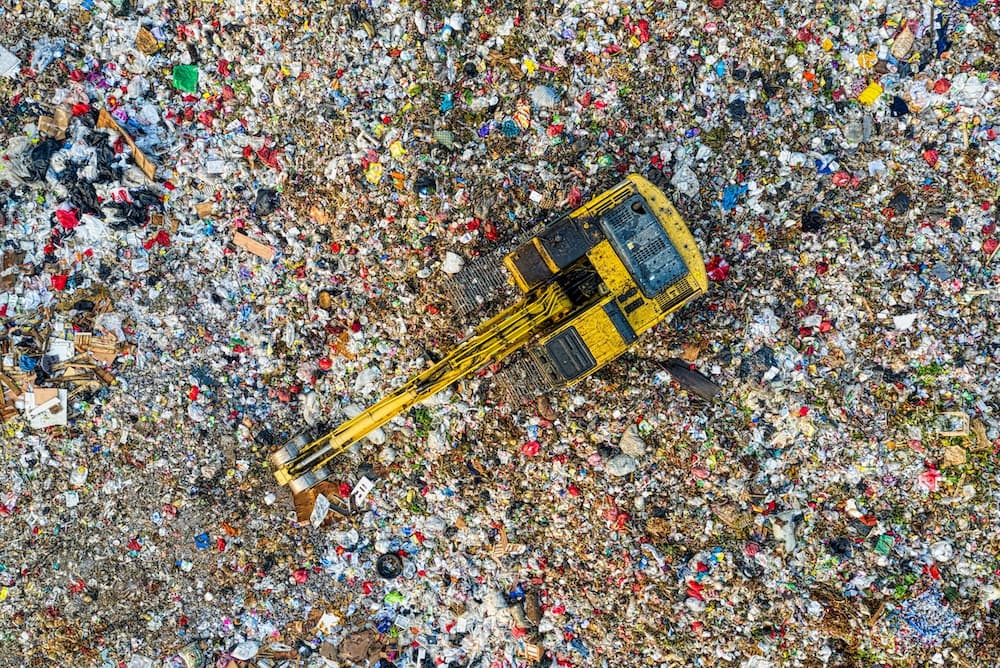
We need to start viewing our clothes as valuable resources that can be reused or recycled instead of trash. There are so many ways to give our clothes a second life; we just need to be a little creative. We can reduce our environmental impact and help make the world a better place just by recycling our clothes or by buying used clothing.
Are you still wondering what to do with worn-out clothes you can't donate? Here are some tips on how to do it.
How to recycle your clothes when they’re past their prime
1. Donate them to a local thrift store, donation bins, or charity
Many organizations will gladly take your used clothes off your hands if they're not damaged. Do the research and find a reputable organization you feel good about donating to. Check for contact details and vet their website. You want to ensure that your clothes go to a good cause and do not end up in a landfill.
Find out if the thrift shops in your area accept clothes for recycling. For an online thrift shop to carry clothes for sale they can not be damaged or beyond salvaging, however, many brick-and-mortar thrift shops will make the extra effort to dispose of the unwanted items they collect at a textile recycling centre. You would need to call and ask them specifically.
You can also check for donation bins in your community. Charity policies may vary from place to place, so calling or checking online to find out if they will recycle the unusable clothes you donate is a good practice. These charities will know exactly what to do with worn-out clothes you can't donate.
Some trusted options in Toronto are:
The Kidney Foundation of Canada: They have donation bins located across the country. They accept all types of clothes, from regular wear to formal wear. You can check their site for donation guidelines and bin locations.
New Circles: They are a Toronto-based organization providing free and low-cost clothes to people in need. They have a community clothing bank where you can donate your clothes. You can check their website for more information on how to donate.
Common Sort: In exchange for your gently used clothing, the shop will give you 25% cash or 50% of what they expect to sell it for as a credit to use in the store.

2. Recycle at a city textile recycling centre
Most cities have textile recycling centres where you can take your clothes to be recycled. The clothes are then sold to rag companies or turned into insulation. This is a great option if you have clothes that are too worn out to be donated. The good news is that many cities are starting to have textile recycling programs, so recycling your clothes is getting easier.
When recycling your clothes, clean them first and remove any non-clothing items such as buttons or zippers. You should also check with your local recycling centre to see what clothes they accept. Your old clothing could be turned into something new, and you would be helping the environment in the process.
Here are a few examples of cities in and around the Greater Toronto Area that participate in textile recycling or have instructions on how to dispose of your textiles:
3. Buy from brands that do "take-back" programs
I am glad that some brands are now implementing "take-back" programs where you can return your used items to the store. Patagonia is one example of a brand that has a take-back program. Click on the link to learn how to recycle Patagonia clothing and gear, so it doesn't end up in a landfill. I hope more brands will follow their lead and start implementing similar programs.
For example, click here for Nike's recycling program details.
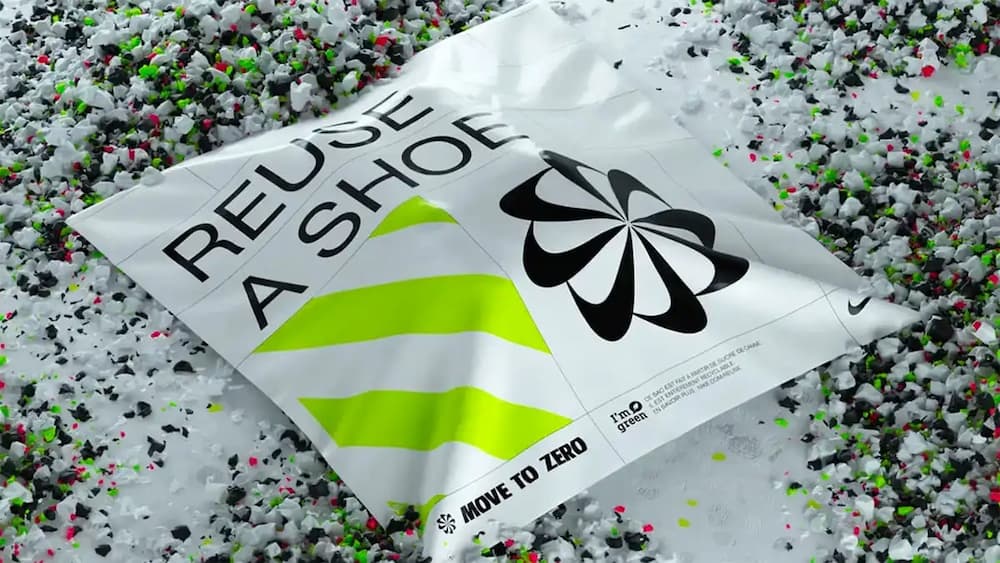
You can check with your favourite brands to see if they have a take-back program. If they don't, encourage them to start one. It would be a great way to show that they care about the environment and their customers. Customer feedback is crucial for businesses, so your voice can make a difference.
4. Order a Zero waste box
If you want to recycle your clothes but don't know where to start, you can order a Zero waste box. These boxes are filled with items that can be recycled, such as clothes, shoes, and accessories. You can then send the box back to the company, and they will take care of recycling the items.
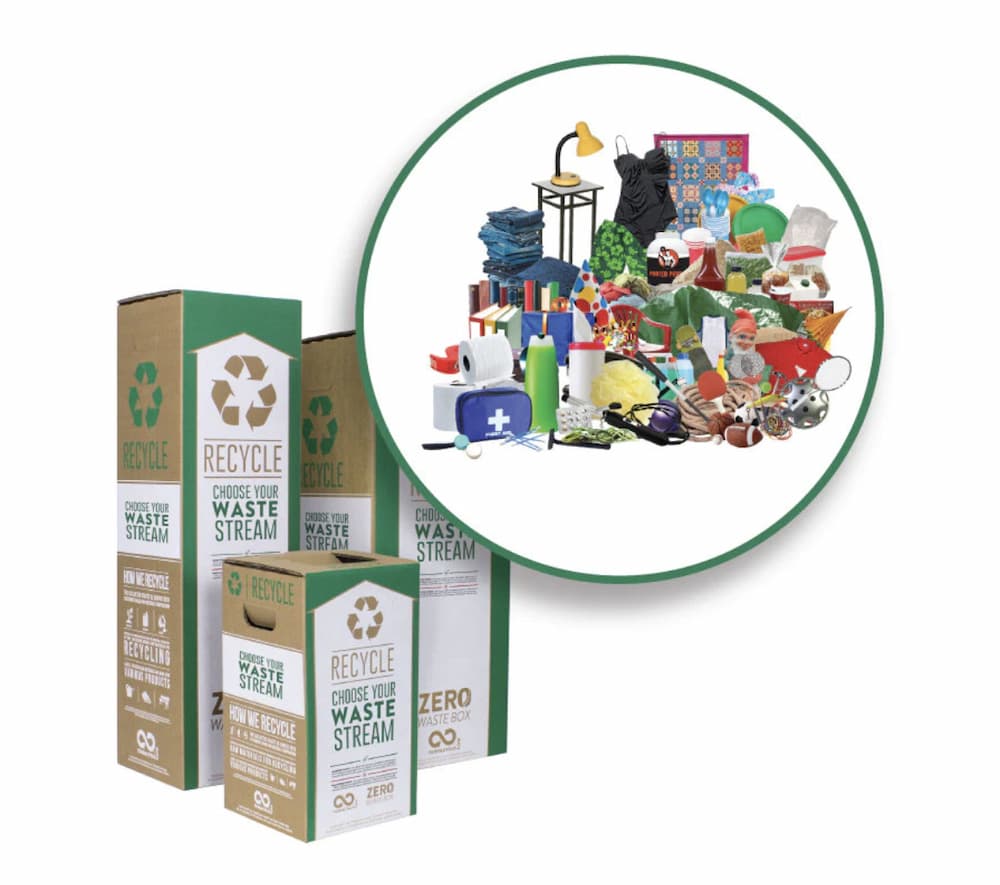
I think this is a great option for people who want to recycle their clothes but don't have the time or resources to do it themselves. It's also a good option if you don't have a local recycling center. The only downside is that it can be expensive. The cost of the box will depend on the company you order from and the size of the box.
5. Compost your natural fibre clothing
If you have worn-out clothing made from natural fibres such as cotton, wool, or linen, you can compost them. The clothes should not be blended with synthetic fibres as they will not break down in the compost. You can check with your local composting facility to see if they accept clothing.
Composting is a great way to reduce the amount of waste going to landfills. The process of composting breaks down the fabric so it can be used to improve the soil. This is a great option for clothes that are too worn out to be donated or recycled.
To compost your clothes, you will need to cut them into small pieces and add them to your compost bin. You should also add some green materials such as leaves or grass to help the process. The composting process can take a few months, so be patient.
6. Give them away to friends or family members
You may have clothes that you don't wear anymore but are still in good condition. If this is the case, you can give them away to friends or family members who will appreciate them. Take this scenario - our mom buys you a shirt for your birthday, but it's not your style. A few years later, you've grown out of it, but it's still in good condition. You can give it to your younger sister or cousin, who will get more use out of it.
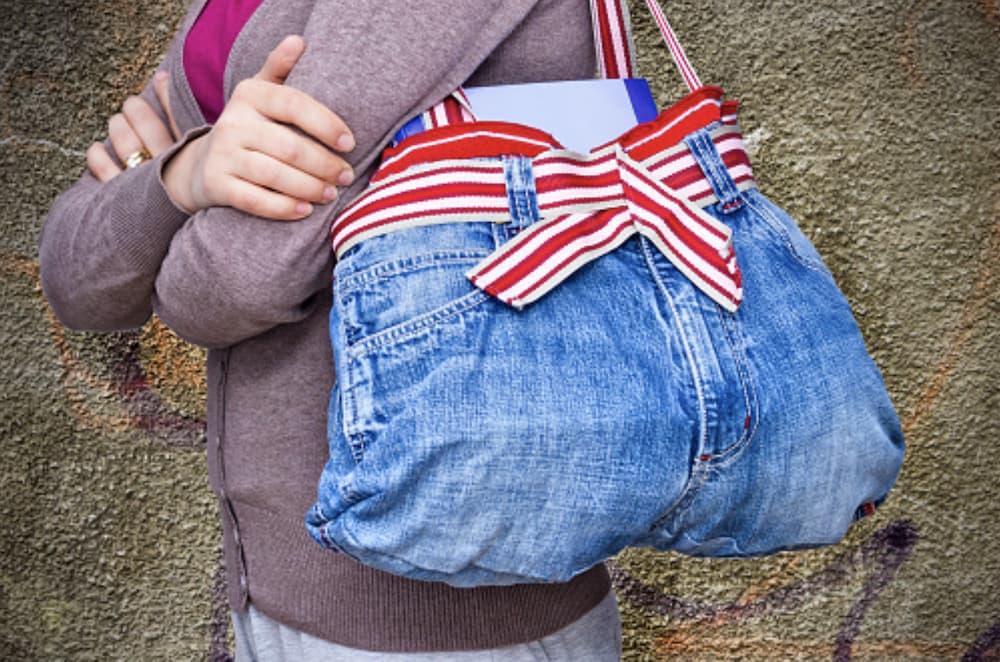
How To Upcycle Your Clothes
At this point, you can stop wondering what to do with worn-out clothes you can't donate. Repurpose your clothes that can't be donated or recycled. Upcycling is when you take an item and turn it into something new and of better quality. You give it a new life instead of throwing it away. This is a great way to be creative and reduce waste at the same time.
- Turn them into cleaning cloths. You can turn them into cleaning rags for items that are too worn out to be donated or recycled. Cut them and make them into different shapes and sizes and use them to dust, clean windows, or wash the car.
- Cut them into pillow staffing, garden holders, or other creative things you can think of. The possibilities are endless when it comes to upcycling your clothes.
- Dress for yard work or painting in your old stained clothes and shoes. This way you don't have to worry about ruining your good clothes.
- Make a quilt or blanket out of your old clothes. This is a great way to keep memories alive and make something practical at the same time. You can also be creative and make a wall hanging or a piece of art.
- Donate them to a theatre group or school for costume purposes. Vintage clothing is always popular among these groups.
- Donate to fashion designers or artists who use clothing in their work. They can use the fabric for their projects.
- Make a pet bed or toy out of them. Your old clothes can provide comfort for your furry friend. Your pets will love them, and you'll be giving them a second chance.
- Make a tote bag or purse out of them. This is a great way to reduce the use of plastic bags. You can also make other items, such as a wallet or a keychain.
- Use them as packing material when you move or ship something.
- Use them as rags for oil changes or other car maintenance.
- Make a scarf, hat, or other clothing items out of them. Get creative and see what you can come up with.
- Use them as plant hangers or garden ties.
All of these are great ways to recycle your clothes without throwing them away. Upcycling is a great way to be creative and reduce waste at the same time. Note that all of these options need time and effort from you.
The biggest impact starts with you!
The earth is being polluted in many ways and one of the major ways is through textile waste. We buy so many clothes and then throw them away after a few uses. This creates a lot of textile waste that ends up in landfills. The fashion industry has fueled overconsumption which has become one of the biggest sources of pollution in the world.
The good news is that there are ways to recycle worn-out clothing, so they don't end up in landfills. You can donate them, recycle them, or even upcycle them. All of these options are great for the environment and can help reduce textile waste.
Every effort counts!
We hope you enjoyed this guide on how to recycle your worn-out clothes. You should have a very good idea of what to do with worn-out clothes you can't donate. If you have the chance or are faced with the opportunity to demand more recycled clothing from brands and manufacturers, let your voice be heard.
Ultimately it will be on us, the consumer, who demands that the large corporations provide a circular, regenerative system for textile production. Our system is linear now and produces so much waste that it is no longer sustainable.
Keep as much clothing (and trash for that matter) out of our landfills. Recycle, upcycle, reuse and buy vintage clothing whenever you can (gently used will also do the trick!) The more we do individually will add up collectively. The sooner more people adopt this mindset, the better off our lives on this planet will be!
Click here if you want to learn "How to Clean Thrifted Clothes" or "Online Thrifting Tips for the Serious Thrifter" or "Reselling CLothes Online? Learn How to Sell Old Clothes From Home"
